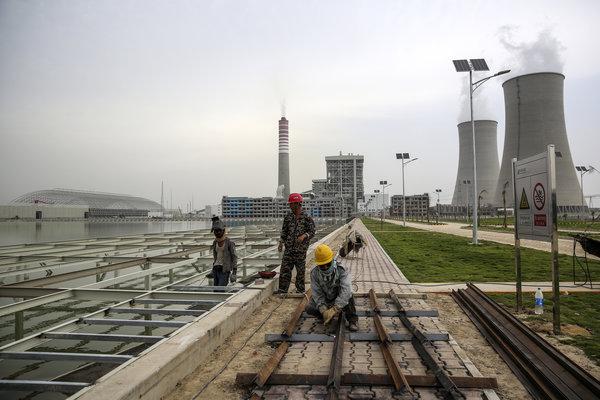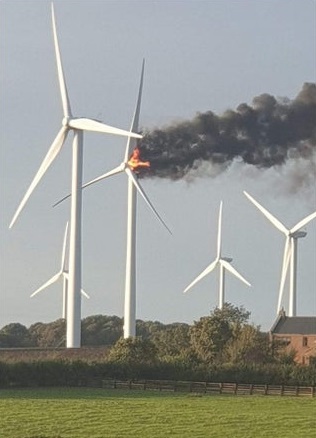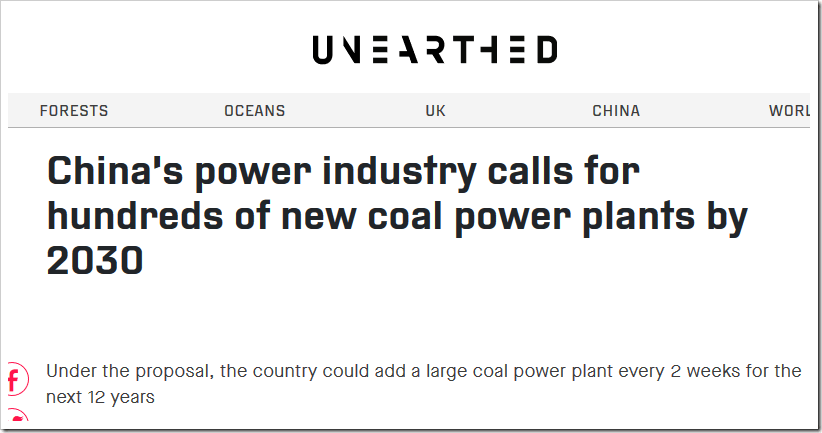No industrial economy has ever powered itself on sunshine and breezes; no country ever will.
Wherever in the world the subsidies begin to dry up, so too has investment in new wind and solar capacity. Nowhere has that collapse been more prominent than in China. Which doesn’t quite fit with the meme that’s been run by renewable energy zealots for years now, that China is hell-bent on a renewable energy future.
Instead, China is building coal-fired power plants, hand over fist.
At the official level the Chinese give a nod and a bow to meeting their purported “climate obligations” – which is simply code for preventing them from enjoying the same industrial and economic success as Europeans have done for the last two centuries – by promising (sometime between now and never) to slash their emissions of carbon dioxide gas.
Always inscrutable, the Chinese have incensed renewable energy rent seekers promoting wind and solar with their obvious love of reliable and affordable electricity which means nuclear and coal-fired plants. As to the latter, here’s a rundown from Paul Homewood on the latest from China.
China Thermal Power Up 2.4% Last Year
Not a Lot of People Know That
Paul Homewood
28 January 2020
Provisional figures from the China Energy Portal indicate that thermal generation continues to rise in China, albeit at a slower rate than the last few years:

As I noted in November, there are three factors behind the slower rise in thermal (which is almost certainly predominantly coal-fired):
- Overall demand for electricity has increased at a much slower rate in 2019 – 4.7% against 8.4% in 2019. This reflects the dramatic slowdown in Chinese economic growth.
- New nuclear capacity has been added in the last two years.
- Better hydro generation, presumably due to wetter weather.
Significantly, thermal generating capacity has continued to grow in 2019, by 4.1%. Just as significant is the dramatic slowdown in new solar power capacity being added. In 2018, 45GW was added, but this dropped to 26GW last year, following the restriction of subsidies.
New wind capacity increased marginally in 2019, from 21GW in 2018 to 25GW.
Not a Lot of People Know That
China’s Coal Power To Remain Dominant Till At Least 2035
Not Alot of People Know That
Paul Homewood
28 January 2020
I covered this story from Greenpeace a few months ago, but I can now add some further detail from the China Energy Portal:
The largest power producers in China have asked the government to allow for the development of between 300 and 500 new coal power plants by 2030 in a move that could single-handedly jeopardise global climate change targets.
It comes as coal-fired power capacity additions in 2018 slowed to their lowest rate since 2004, both in China and globally, though carbon emissions from the sector continued to rise, according to the International Energy Agency.
In its review of the government’s five-year-plan, China Electricity Council (CEC) – the influential industry body representing China’s power industry – recommended adopting a ‘cap’ for coal power capacity by 2030 — but the 1300GW limit proposed is 290GW higher than current capacity. The target is for the country’s coal-fired capacity to continue to grow until peaking in 2030.
The cap would enable China to build 2 large coal power stations a month for the next 12 years, and grow the country’s capacity by an amount nearly twice the size of Europe’s total coal capacity.
The China Energy Portal now has the full article, originally published in China Power Enterprise Management, on which the above Greenpeace story was based.
The translation from Chinese is not brilliant, but it gives some insights into the projections for 2035. We know that the China Electricity Council are calling for 1300GW of coal capacity by 2030, when they say it will peak. But what about afterwards?
The article gives us some clues:
- Total electricity demand is projected to rise from 7300 to 11400 TWh a year.
- The target generation for non-fossil fuels is 57%, so fossil fuels would therefore be 4902 TWh. Currently they are running at 5045 TWh. In other words, even by 2035 it will be only slightly lower than now.
- Much of the increased demand will be supplied by new nuclear capacity, which is expected to rise from 48GW currently to 248GW by 2035. Along with new hydro capacity, this could supply half of the extra power demand.
- The translation is ambiguous when it comes to wind/solar, but reading it generously implies that wind and solar capacity will increase to 600GW each, from 210 and 204GW currently.
On this basis, they will combined be contributing about 20% of China’s electricity by 2035 – hardly a stunning amount, and no more than the UK is achieving now.
All of this means that thermal power, effectively nearly all coal, will still be the major source of China’s electricity in 2035, accounting for 43%.
If the Greenpeace assumptions are right, new coal fired capacity could amount to between 330 and 470GW between now and 2030, after allowing for retirements of older plants.
Add on to this the new coal fired capacity added since 2006, something in the region of 700GW, and there will be an awful lot of modern coal power plant still operational by 2035. It is hard to see China shutting any of that prematurely, as long as the marginal operating costs are less than the full cost of replacing it by other sources.
In short, anybody who thinks that China’s coal power output will suddenly start to plummet after 2030, even if it peaks then, is in for a rude awakening!
The China Portal translation of the original article is here.
Not a Lot of People Know That






China, unlike the West, is run by rational people, mostly men.
The ratio of engineers to lawyers in China’s government is vastly higher than it is in the west.
Their system has nasty bits, but they know how to do infrastructure.
Reblogged this on Climate- Science.press.
Reblogged this on ajmarciniak.